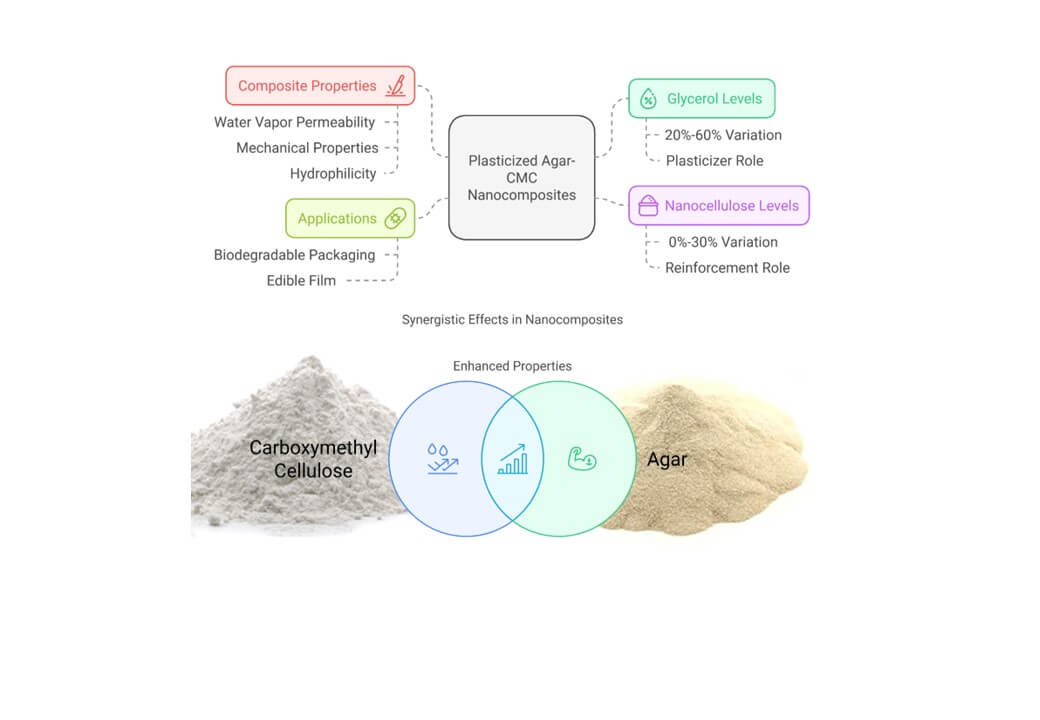 Open Access
Open Access
ARTICLE
Plasticized Agar-Carboxymethyl Cellulose Based Composites Properties Reinforced with Nanocellulose
1 Department of Food Science and Technology, Sofian Branch, Islamic Azad University, Sofian, Iran
2 Industrial Nanotechnology Research Center, Tabriz Branch, Islamic Azad University, Tabriz, Iran
* Corresponding Author: Farid Amidi-Fazli. Email:
Journal of Renewable Materials 2025, 13(5), 915-929. https://doi.org/10.32604/jrm.2025.02024-0009
Received 07 October 2024; Accepted 08 January 2025; Issue published 20 May 2025
Abstract
Biodegradable packaging has emerged as a viable alternative to non-biodegradable polymers. This study explores different treatments of agar-carboxymethyl cellulose (CMC) nanocomposites developed via the casting method. We investigated the effects of varying glycerol levels (20%–60%) as a plasticizer and nanocellulose levels (0%–30%) as a filler on the properties of agar-CMC nanocomposites. Key properties analyzed included water vapor permeability, solubility in water, moisture absorption, water contact angle, color properties, and mechanical properties. The films exhibited low water vapor permeability, ranging from 2.50 × 10−11 g/msPa to 2.23 × 10−12 g/msPa. Water solubility of the films was below 40%, except for the film containing 60% glycerol. Despite this, all samples demonstrated very low moisture absorption. The water droplet contact angle tests indicated that the film surfaces were moderately hydrophilic. Increasing the nanocellulose content further enhanced the hydrophilicity of the surfaces. The maximum tensile strength and elongation at break recorded were 31.09 MPa and 46.2%, respectively. While adding glycerol reduced tensile strength, it improved elongation at break. Visual observations and color evaluation revealed that the films were transparent, with a low total color difference and a low yellow index. The simultaneous use of both agar and carboxymethyl cellulose polymers in biocomposite formulation successfully mitigated the disadvantages associated with each biopolymer when used alone, thereby enhancing their functional properties.Graphic Abstract

Keywords
Cite This Article
 Copyright © 2025 The Author(s). Published by Tech Science Press.
Copyright © 2025 The Author(s). Published by Tech Science Press.This work is licensed under a Creative Commons Attribution 4.0 International License , which permits unrestricted use, distribution, and reproduction in any medium, provided the original work is properly cited.


 Submit a Paper
Submit a Paper Propose a Special lssue
Propose a Special lssue View Full Text
View Full Text Download PDF
Download PDF Downloads
Downloads
 Citation Tools
Citation Tools